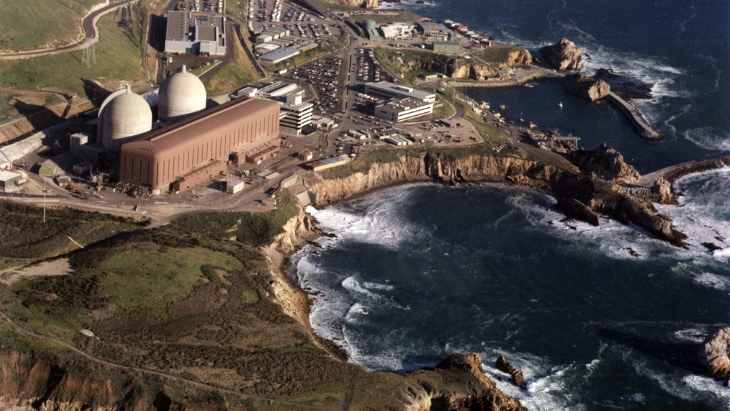California could decarbonise faster with nuclear, study finds
Extending operations at the Diablo Canyon nuclear power plant would greatly reduce carbon emissions and natural gas use and could help California reach its decarbonisation goals years earlier than it otherwise would, according to a new study carried out by Brattle Group and released by Carbon Free California.

Diablo Canyon (Image: US Nuclear Regulatory Commission/PG&E)
California has committed to decarbonise its power grid with a goal of 60% renewable energy by 2030 and 100% clean by 2045 under Senate Bill 100, officially titled The 100 Percent Clean Energy Act of 2018. However, Diablo Canyon - the state's only operating nuclear power plant - is slated for closure in November 2024 for unit 1 and August 2025 for unit 2.
The study questions how retaining Diablo Canyon could help meet California's climate and reliability goals, and whether retaining the plant could help it to decarbonise more successfully, quickly, reliably, or at a lower cost. It uses Brattle's state-of-the-art gridSIM model to analyse a base case, which assumes that Diablo Canyon fully retires before 2025, which is then compared with a change case, with the plant's operations extended to 2045.
The analysis indicates that Diablo Canyon's "unique 24x365 clean energy characteristics" would help California decarbonise more quickly (with lower cumulative emissions), more reliably, and at lower total cost. Specifically, the report says, even assuming high solar energy buildout rates and the widespread availability of combined cycle gas with carbon capture and sequestration (CCS) after 2035, California will rely on substantial unabated gas-fired generation and imports. Retaining the nuclear plant would displace gas-fired generation and emitting imports, especially during the first 10 years, and would also reduce cumulative emissions by around 40 million tonnes CO2, which the report says is more than an entire year’s worth of in-state electricity generation emissions, while also lowering other local air pollution from gas-fired plants.
Retaining Diablo Canyon could also provide "insurance" against a slower-than-hoped-for clean energy deployment, helping to avoid blackouts, as well as significantly reducing electric power costs and - by providing more time for the state to more than quadruple its current annual deployment rate of solar and wind, while delaying the need for novel technologies such as CCS - could help it to achieve a potentially accelerated goal of a carbon free-grid years earlier, by 2035.
"Diablo Canyon is already the largest clean energy resource in California, a state that has set the ambitious goal of a carbon-free electric grid," Brattle Group Principal Sam Newell said. "In combination with a dramatic expansion of solar, wind, storage and dispatchable clean technologies, the study shows that keeping Diablo Canyon online will help California achieve its goals faster, at less cost and with greater grid reliability."
The report comes at a time when the Californian Administration of Governor Gavin Newsom has indicated its interest in exploring the option of retaining Diablo Canyon and the state faces significant electricity reliability challenges, Carbon Free California said. Recent polling has found that 58% of state residents believe Diablo Canyon should continue to operate, with even greater support in the local community surrounding the plant, the group noted.
The Carbon Free California group, which believes the state must pursue all forms of emission-free energy to address the climate crisis and achieve its emission reduction goals, is funded by California-based entrepreneurs.
Researched and written by World Nuclear News
- China Institute of Atomic Energy
- Nuclear Power Institute of China
- Southwestern Institute of Physics
- China Nuclear Power Operation Technology Corporation, Ltd.
- China Nuclear Power Engineering Co., Ltd.
- China Institute for Radiation Protection
- Beijing Research Institute of Uranium Geology (BRIUG)
- China Institute of Nuclear Industry Strategy (CINIS)
- China Nuclear Mining Science and Technology Corporation


